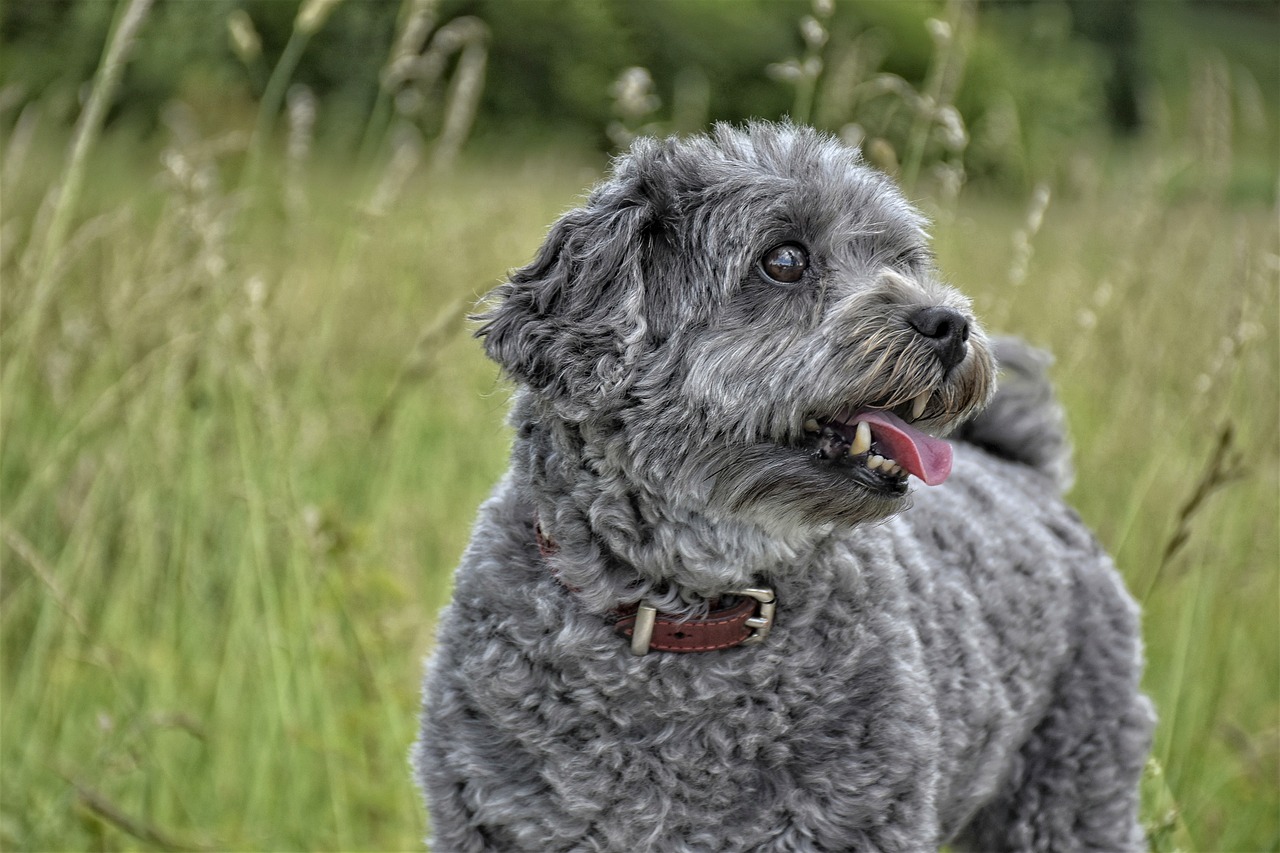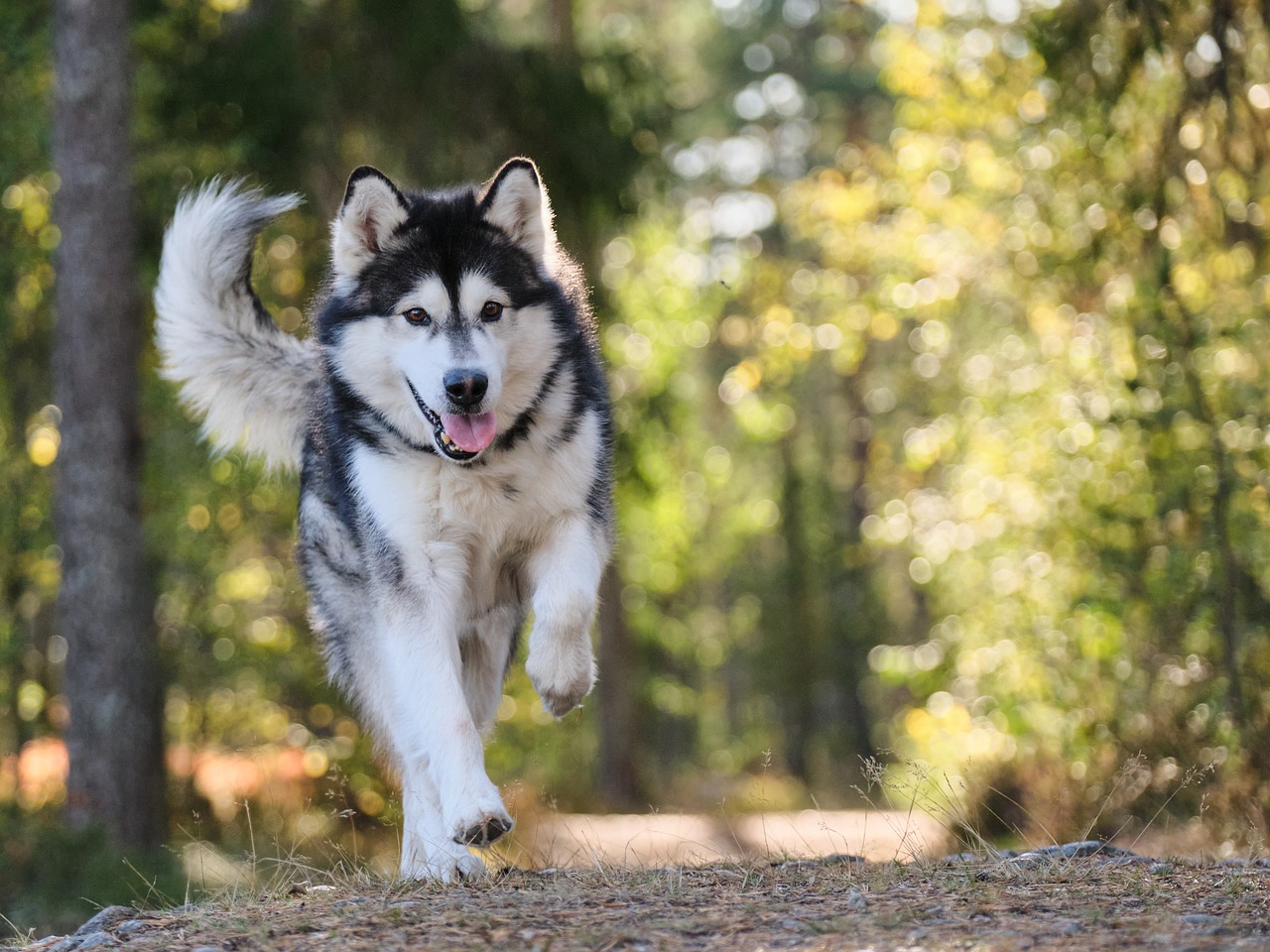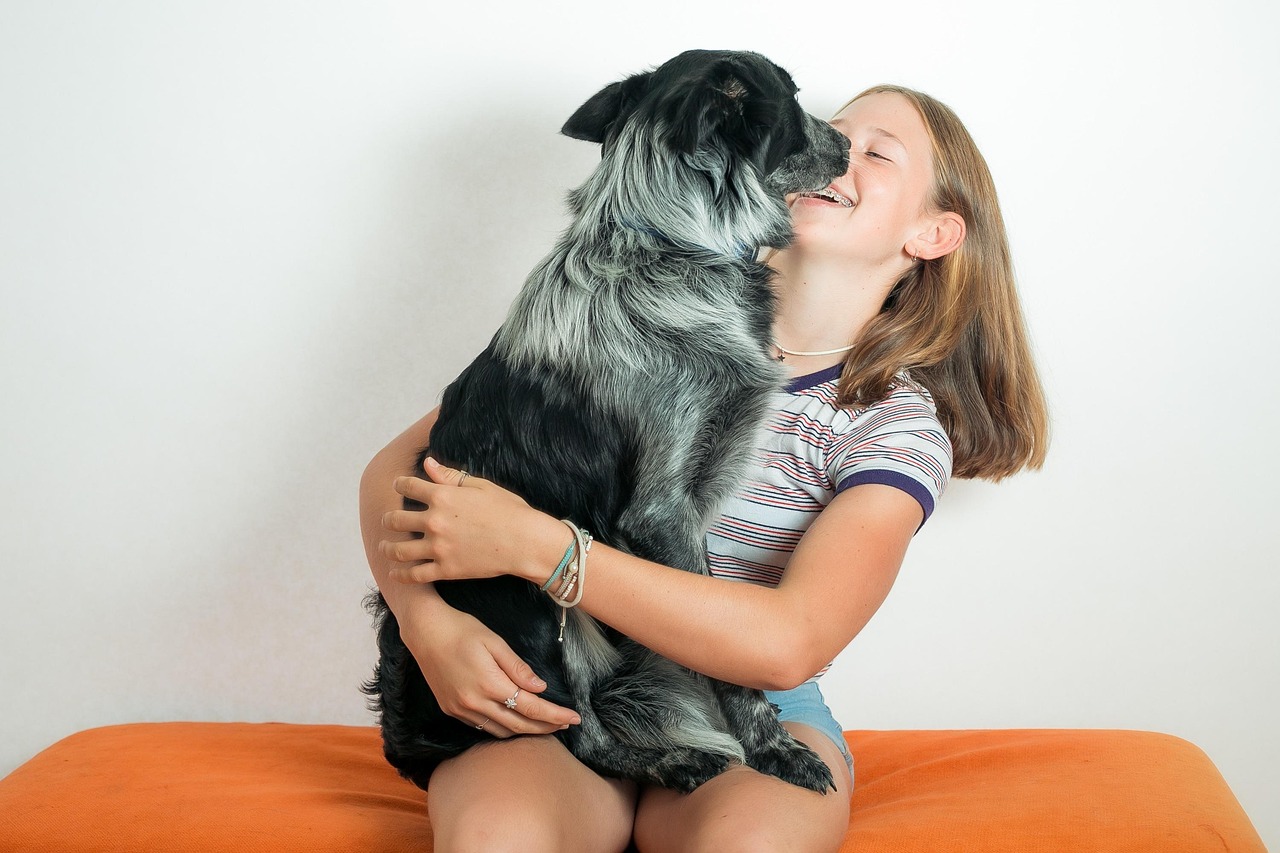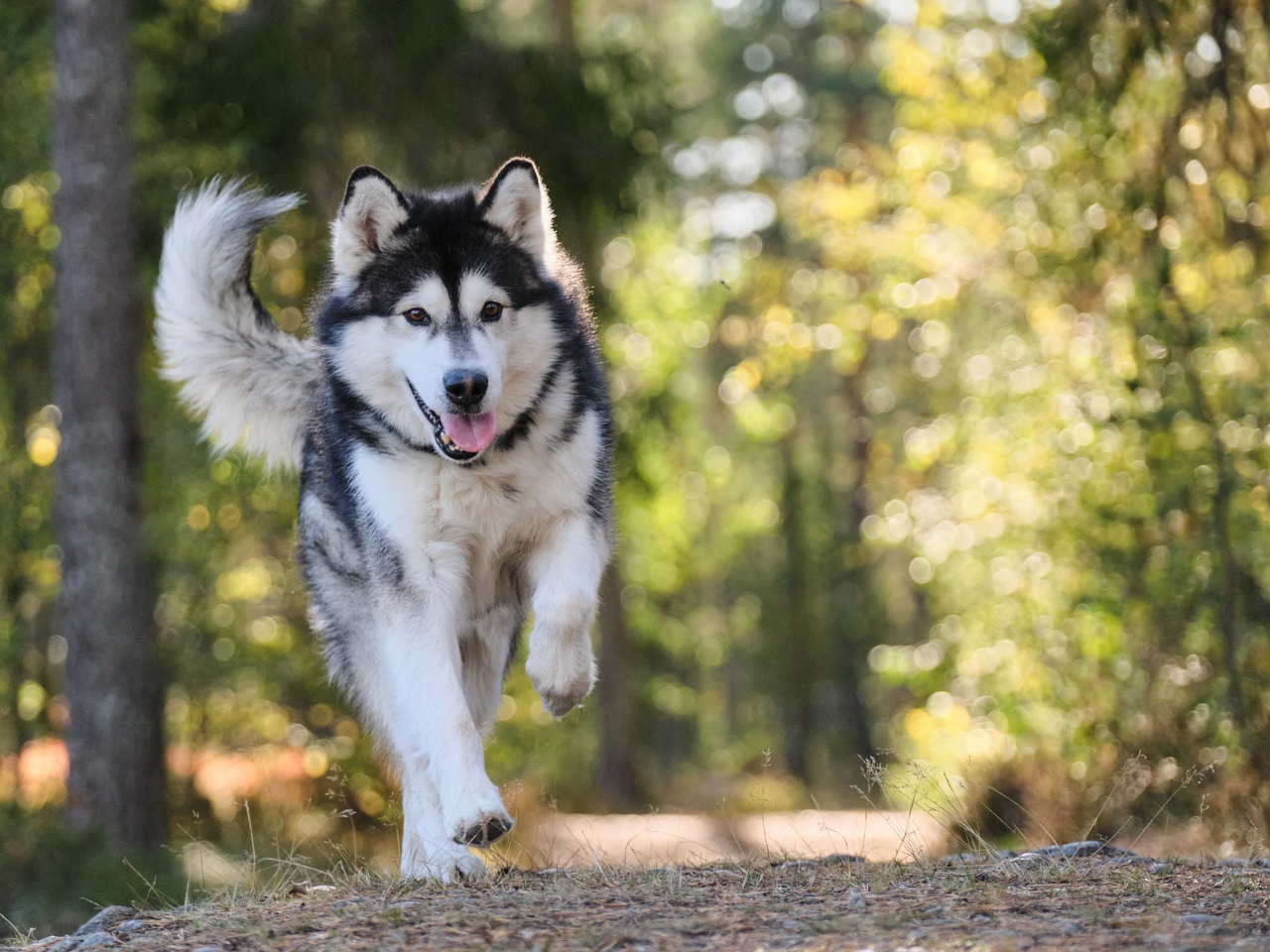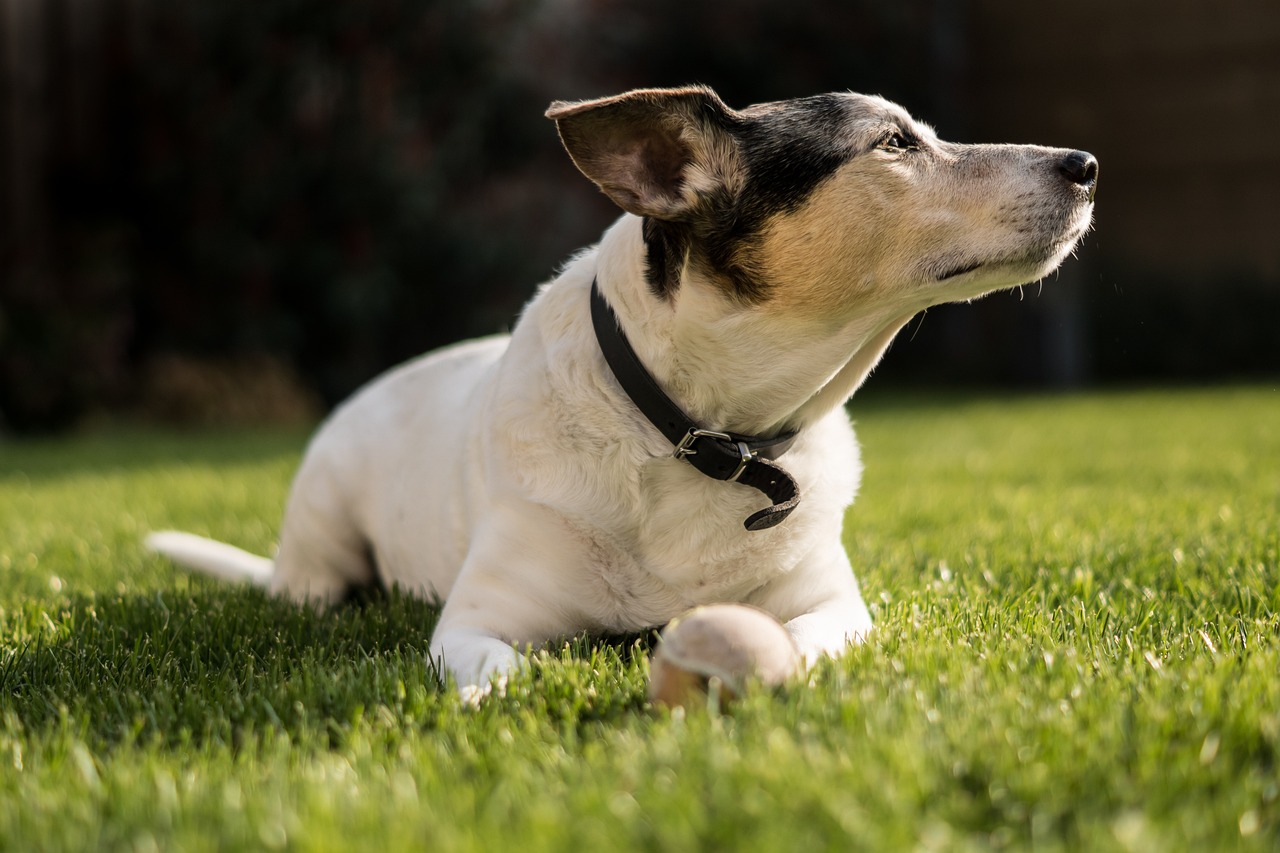Choosing the right bed for your dog is not just a matter of style; it is a crucial aspect of their overall health and comfort. A well-selected dog bed can significantly impact your pet’s quality of life, providing them with a safe space to rest and recharge. This comprehensive guide will delve into the various types of dog beds available, essential considerations for making an informed choice, and practical tips for maintaining the bed’s cleanliness and longevity.
A quality dog bed is vital for your pet’s well-being. It not only provides support for their joints but also contributes to their emotional comfort. Dogs that have a designated resting place often experience reduced anxiety and stress, leading to a happier, healthier life.
Understanding the different types of dog beds can help you choose the best option for your furry friend. Here are some popular types:
- Orthopedic Dog Beds: Ideal for older dogs or those with joint issues, these beds often feature memory foam for optimal support.
- Heated Dog Beds: Perfect for dogs that feel cold easily, these beds provide warmth, especially in colder climates.
- Raised Dog Beds: Great for outdoor use, these beds keep dogs off the ground, providing ventilation and comfort.
When selecting a dog bed, several factors should be taken into account:
- Size: Ensure the bed is appropriately sized for your dog to avoid discomfort.
- Sleeping Style: Observe how your dog sleeps; whether they curl up or stretch out can influence the bed’s shape.
- Material: Choose durable, pet-safe materials that are easy to clean.
Regular maintenance is essential for hygiene and the longevity of your dog’s bed. Here are some tips:
- Washing: Regularly wash the bed cover to eliminate dirt and allergens.
- Spot Cleaning: For minor stains, use pet-safe cleaners to maintain a clean sleeping area.
Knowing when to replace your dog’s bed can enhance their comfort. Signs to look for include:
- Wear and Tear: Frayed edges or flattened areas indicate the bed may no longer provide adequate support.
- Changes in Behavior: If your dog avoids their bed or seems uncomfortable, it may be time for a new one.
In conclusion, selecting the right bed for your dog is a significant decision that affects their comfort and health. By considering the various types of beds available, understanding your dog’s specific needs, and maintaining the bed properly, you can ensure your furry friend enjoys a restful and supportive sleeping environment.

Why a Good Dog Bed Matters
When it comes to your dog’s health and happiness, selecting a high-quality bed is of utmost importance. A good dog bed serves as more than just a place for your furry friend to sleep; it plays a crucial role in their overall well-being.
Support for Joints: Dogs, especially those that are older or larger breeds, require adequate support for their joints. A well-constructed bed can alleviate pressure points, reducing the risk of joint pain and arthritis. This is particularly important for dogs that are prone to hip dysplasia or other orthopedic issues.
Comfort and Rest: Just like humans, dogs need a comfortable place to rest. A quality bed provides a cozy, inviting space that encourages restful sleep. When dogs sleep well, they are more energetic and playful during the day, which contributes to their overall happiness.
Anxiety Relief: Dogs can experience anxiety from various sources, including separation, loud noises, or changes in their environment. A well-designed bed can offer them a safe haven, helping to alleviate stress. Beds with raised edges or bolsters can create a sense of security, mimicking the feeling of being in a den.
Temperature Regulation: Some dog beds are designed with materials that help regulate temperature, keeping your pet cool in the summer and warm in the winter. This feature is particularly beneficial for dogs that are sensitive to temperature changes.
Hygiene and Health: A quality dog bed is often made from materials that are easy to clean and maintain. Regular washing helps reduce allergens and bacteria, promoting a healthier living environment for your pet. Choosing beds with removable covers can simplify this process.
In conclusion, investing in a quality dog bed is essential for your pet’s health, comfort, and happiness. By considering factors such as joint support, comfort, anxiety relief, temperature regulation, and hygiene, you can select a bed that meets your dog’s specific needs. Remember, a well-rested dog is a happy dog!

Types of Dog Beds Available
Selecting the right bed for your dog is crucial for their overall health and happiness. With a wide variety of options available, understanding the different types of dog beds can help you make an informed choice that caters to your pet’s specific needs. Below, we explore the most common types of dog beds and their unique features.
There are various types of dog beds designed for different needs. From orthopedic beds to heated options, knowing the differences can help you make an informed decision.
- Orthopedic Dog Beds
These beds are specifically designed for dogs with joint issues or older pets. They often utilize high-density memory foam to provide optimal support and comfort, reducing pressure on joints and enhancing sleep quality.
- Heated Dog Beds
Ideal for dogs that get cold easily or for those living in colder climates, heated dog beds offer warmth and comfort. They are especially beneficial for senior dogs or those with arthritis, promoting better sleep and relaxation.
- Donut Dog Beds
These beds feature raised edges and a soft, cushioned center, providing a sense of security for dogs that like to curl up. They are perfect for anxious pets who prefer a cozy, nest-like environment.
- Cooling Dog Beds
For dogs that struggle with heat, cooling beds are designed to help regulate body temperature. These beds often use gel-infused materials or breathable fabrics to keep your pet cool during hot weather.
- Travel Dog Beds
Lightweight and portable, travel dog beds are perfect for on-the-go pet owners. They can be easily folded and stored, making them ideal for road trips or camping adventures.
Choosing the right type of bed for your dog is essential for their comfort and well-being. Consider your dog’s age, health, and sleeping habits when making your selection. A well-chosen bed can significantly enhance your dog’s quality of life, providing them with a safe and comfortable space to rest.
Orthopedic Dog Beds
are specially crafted to provide essential support for dogs suffering from joint issues or those that are aging. These beds are more than just a place for your furry friend to sleep; they are a vital component of their health and well-being. By utilizing advanced materials such as memory foam, orthopedic beds offer a unique combination of comfort and support tailored to the needs of your pet.
One of the primary benefits of orthopedic beds is their ability to reduce pressure on joints. This is particularly important for larger breeds or dogs with arthritis, as traditional beds may not provide adequate cushioning. The memory foam used in these beds conforms to your dog’s body shape, distributing weight evenly and minimizing discomfort during rest. As a result, dogs can experience improved sleep quality, which is crucial for their overall health.
In addition to physical support, orthopedic beds can also play a role in anxiety reduction. A comfortable and supportive sleeping environment can help dogs feel secure, leading to a more restful sleep. This is especially beneficial for dogs that may experience stress from changes in their environment or routine.
When choosing an orthopedic bed, it’s essential to consider the size and shape that best suits your dog. A bed that allows them to stretch out comfortably will enhance their relaxation and sleep quality. Furthermore, many orthopedic beds come with removable, washable covers, making maintenance easier and ensuring a clean sleeping space.
Overall, investing in an orthopedic dog bed is a proactive step toward enhancing your pet’s quality of life. By providing the necessary support for their joints and promoting better sleep, you can help your furry companion live a healthier, happier life.
Benefits of Orthopedic Beds
Investing in an orthopedic bed for your dog can significantly enhance their quality of life. These specially designed beds offer numerous advantages, particularly for dogs with specific health needs or those belonging to larger breeds.
- Joint Support: Orthopedic beds are engineered to provide exceptional support for your dog’s joints. The high-density foam used in these beds helps to distribute weight evenly, reducing pressure points that can lead to discomfort and pain.
- Improved Sleep Quality: A well-supported dog is a comfortable dog. By alleviating stress on joints, orthopedic beds promote deeper and more restful sleep, which is crucial for your pet’s overall health and well-being.
- Recovery Aid: For dogs recovering from injuries or surgeries, an orthopedic bed can be a game-changer. The supportive nature of these beds aids in the healing process by providing the necessary comfort that allows your dog to rest without strain.
- Temperature Regulation: Many orthopedic beds are designed with materials that help regulate temperature, ensuring that your dog stays warm in colder months and cool during warmer weather. This feature further enhances comfort and promotes better sleep.
- Durability: Orthopedic beds are built to last. The high-quality materials used in their construction not only provide support but also ensure that the bed withstands wear and tear, making it a wise investment for your pet’s long-term comfort.
In conclusion, choosing an orthopedic bed for your dog is a decision that can lead to significant improvements in their health and happiness. With benefits ranging from enhanced joint support to improved sleep quality, these beds are particularly advantageous for larger breeds and those with specific health concerns. Prioritizing your dog’s comfort with a quality orthopedic bed can contribute to a happier and healthier life.
Choosing the Right Size
Selecting the appropriate size for your dog’s orthopedic bed is essential for ensuring their comfort and well-being. A bed that is too small can restrict your dog’s ability to stretch out, leading to discomfort and disrupted sleep. On the other hand, a bed that is too large may not provide the necessary support and security that your pet seeks.
When determining the right size, consider the following factors:
- Dog’s Breed and Size: Different breeds have varying body shapes and sizes. For instance, a Great Dane will require a much larger bed than a Chihuahua. Measure your dog from nose to tail while they are lying down to ensure the bed is long enough.
- Sleeping Position: Observe how your dog sleeps. If they tend to curl up, a smaller bed may suffice. However, if they prefer to stretch out, a larger bed will be necessary to accommodate their sleeping style.
- Weight Considerations: Heavier dogs may need a thicker bed to provide adequate support for their joints. Ensure that the bed is not only long enough but also sturdy enough to support your dog’s weight without sagging.
In addition to these factors, consider the bed’s design. Orthopedic beds often come in various shapes, including rectangular, oval, or even donut styles. Each design offers different benefits, so choose one that aligns with your dog’s preferences.
Ultimately, selecting the right size orthopedic bed is about giving your dog the space they need to relax fully. A well-sized bed can contribute significantly to their overall relaxation and health, allowing them to enjoy restorative sleep, which is vital for their physical and emotional well-being.
By taking the time to find the perfect fit, you are investing in your dog’s comfort and happiness, ensuring they have a cozy retreat to call their own.
Heated Dog Beds
When it comes to providing a comfortable sleeping environment for your furry friend, stand out as an excellent choice, especially for pets that are sensitive to cold or for those living in colder climates. These specialized beds offer a unique blend of warmth and comfort, ensuring your pet enjoys a restful night’s sleep.
One of the primary advantages of heated dog beds is their ability to help maintain your pet’s body temperature. This is particularly beneficial for older dogs, small breeds, and those with thin fur, as they can easily become chilly. The gentle warmth emitted by these beds not only keeps your pet cozy but also promotes better sleep patterns, which is essential for their overall health.
Moreover, heated dog beds can provide therapeutic benefits. The warmth can help to soothe aching joints and muscles, making them a great option for dogs suffering from arthritis or other joint-related issues. By alleviating discomfort, these beds can enhance your pet’s quality of life, allowing them to relax and recuperate more effectively.
When selecting a heated dog bed, consider factors such as size, heating mechanism, and safety features. It’s essential to choose a bed that is appropriately sized for your dog, allowing them to stretch out comfortably. Additionally, look for models with adjustable heat settings, enabling you to customize the warmth according to your pet’s preferences.
Safety is another crucial aspect. Opt for beds with chew-resistant cords and automatic shut-off features to prevent overheating. Regular maintenance is also important; ensure that the bed is easy to clean and that the heating elements are functioning properly.
In conclusion, heated dog beds are a fantastic investment for pet owners looking to provide their dogs with a warm and comfortable sleeping space. By understanding the benefits and features of these beds, you can make an informed decision that contributes to your pet’s happiness and well-being.

Factors to Consider When Choosing a Dog Bed
Choosing the right dog bed is a significant decision that can greatly impact your pet’s overall health and happiness. To make an informed choice, it’s essential to consider various factors that cater to your dog’s unique needs.
- Dog Size and Weight: It is crucial to select a bed that accommodates your dog’s size and weight. A bed that is too small can lead to discomfort, while one that is too large may not provide the necessary support.
- Sleeping Habits: Observe how your dog sleeps. Does your dog curl up, sprawl out, or prefer to nest? Understanding their sleeping style will help you choose a bed shape that offers the right level of comfort.
- Health Concerns: If your dog has specific health issues, such as arthritis or hip dysplasia, consider an orthopedic bed. These beds are designed to provide extra support and alleviate pressure on joints, enhancing your dog’s sleep quality.
- Material Quality: The materials used in the dog bed can significantly affect its durability and comfort. Look for high-quality, pet-safe materials that are easy to clean and maintain.
- Climate Considerations: If you live in a colder climate, a heated dog bed might be beneficial. Conversely, if your dog tends to overheat, consider a bed made from breathable materials.
- Age of Your Dog: Puppies and older dogs often have different needs. Puppies may require a bed that can withstand chewing, while senior dogs might benefit from softer, more supportive options.
- Allergies: If your dog has allergies, look for hypoallergenic materials. Additionally, waterproof and washable covers can help maintain a clean sleeping environment.
In conclusion, taking the time to assess these factors will ensure that you choose a dog bed that not only meets your pet’s needs but also enhances their comfort and well-being. A well-chosen bed can lead to better sleep, improved health, and a happier dog.
Dog Size and Weight
When it comes to ensuring your dog’s comfort, choosing the right bed is paramount. A bed that accommodates your dog’s size and weight is crucial for their overall well-being. If the bed is too small, it can lead to discomfort, resulting in restlessness and poor sleep quality. Additionally, a bed that is not appropriately sized may not provide the necessary support for your dog’s body, which can exacerbate any existing health issues.
For instance, large breeds require beds that are not only spacious but also capable of supporting their weight without sagging. On the other hand, smaller dogs may prefer a snugger fit that makes them feel secure. Understanding your dog’s specific needs is essential in selecting a bed that will promote healthy sleep habits.
Moreover, consider your dog’s sleeping style. Some dogs enjoy sprawling out, while others prefer to curl up. A bed that allows for natural sleeping positions can significantly enhance comfort. It’s also important to keep in mind that dogs, like humans, can experience joint pain and discomfort as they age. Therefore, investing in a bed that offers adequate support can be a wise choice for older pets or those with joint issues.
In summary, selecting a bed that fits your dog’s size and weight is not just about comfort; it is about ensuring their health and happiness. A well-chosen bed can lead to better sleep, reduced anxiety, and improved overall quality of life for your furry friend.
- Consider Your Dog’s Size: Ensure the bed is spacious enough for your dog to move comfortably.
- Evaluate Weight Support: Choose a bed that can adequately support your dog’s weight.
- Understand Sleeping Styles: Select a bed shape that aligns with how your dog likes to sleep.
By taking these factors into account, you can create a cozy and supportive sleeping environment for your beloved pet.
Sleeping Style
Understanding Your Dog’s Sleeping StyleWhen it comes to selecting the perfect bed for your furry friend, understanding their sleeping style is crucial. Dogs exhibit a variety of sleeping positions that can provide insight into their comfort preferences. Whether your pup curls up into a tight ball, stretches out like a starfish, or prefers a cozy, nest-like environment, each sleeping style has implications for the type of bed that will best suit their needs.
- Curling Up: Dogs that curl up often seek warmth and security. This sleeping style is common among smaller breeds and those that may feel vulnerable. A round or bolstered bed can provide the sense of enclosure they desire, allowing them to feel safe and snug.
- Stretching Out: If your dog loves to sprawl out, they likely need a bed that offers ample space. Look for rectangular or large-sized beds that allow them to stretch their legs fully. These beds provide the necessary room for comfort, especially for larger breeds.
- Nest-Like Preferences: Some dogs prefer a bed with raised edges or a soft, cushioned environment that mimics a nest. These beds can help reduce anxiety and provide a comforting space for dogs that enjoy burrowing and snuggling.
By observing your dog’s sleeping habits, you can make an informed decision about the shape and design of their bed. This consideration not only enhances their comfort but also promotes better sleep quality and overall well-being.
In conclusion, your dog’s sleeping style is a key factor in choosing the right bed. By taking the time to understand their preferences, you can select a bed that caters to their specific needs, ensuring they have a restful and rejuvenating sleep experience.

Materials Used in Dog Beds
When it comes to selecting the right bed for your furry friend, the materials used play a crucial role in determining the overall quality and longevity of the product. Understanding the different materials available can significantly impact your dog’s comfort, health, and ease of maintenance.
Investing in a dog bed made from high-quality materials ensures that it withstands daily wear and tear while providing a comfortable resting place for your pet. Poor-quality materials can lead to discomfort, allergies, and even health issues over time.
Durability is essential for any dog bed, especially for active or larger breeds. Beds made from high-denier fabrics and reinforced stitching tend to last longer. Look for materials that resist tearing and fraying, ensuring that your investment pays off.
The comfort level of a dog bed is significantly influenced by the type of filling used. Memory foam is often regarded as the best choice due to its ability to conform to your dog’s body shape, providing superior support and reducing pressure on joints. Conversely, standard foam may not offer the same level of comfort.
Another vital factor is the ease of cleaning. Opting for beds with removable, washable covers can make maintenance a breeze. Additionally, consider materials that are water-resistant or waterproof, as these can help protect the bed from spills and accidents, keeping it hygienic for your pet.
Always ensure that the materials used in your dog’s bed are pet-safe and non-toxic. This is especially important for dogs that may chew on their bedding. Look for certifications or labels that indicate the materials meet safety standards.
In conclusion, choosing the right materials for your dog’s bed is essential for ensuring their comfort, health, and the longevity of the product. By prioritizing durability, comfort, ease of cleaning, and safety, you can provide your pet with a cozy and supportive sleeping environment.
Memory Foam vs. Standard Foam
When it comes to choosing the right bed for your furry friend, understanding the differences between memory foam and standard foam is crucial. This choice can significantly impact your dog’s comfort, health, and overall quality of life.
Memory foam beds offer a level of support that standard foam simply cannot match. Unlike traditional foam, which may compress and lose its shape over time, memory foam is designed to conform to your dog’s unique body shape. This feature allows for better distribution of weight, which is essential for providing pressure relief and comfort.
One of the primary benefits of memory foam is its ability to respond to heat and pressure. As your dog lies down, the foam softens in the areas where it is most needed, creating a personalized sleeping surface. This can be particularly beneficial for dogs with joint issues, as it helps to alleviate discomfort and promotes restful sleep.
In contrast, standard foam beds may not provide adequate support, leading to pressure points that can cause discomfort over time. These beds often flatten quickly and may require frequent replacement, making them a less economical choice in the long run.
Moreover, memory foam is often made from high-quality materials that are both durable and easy to clean. Many memory foam beds come with removable, washable covers, ensuring that your dog’s sleeping environment remains hygienic. In comparison, standard foam beds may absorb odors and stains, making them less appealing for both you and your pet.
Ultimately, investing in a memory foam bed can lead to improved sleep quality for your dog, enhancing their overall well-being and happiness. As you consider your options, remember that a good bed is not just a luxury; it is an essential component of your dog’s health.
Waterproof and Washable Covers
are essential features to consider when selecting a bed for your dog. These covers not only enhance the bed’s longevity but also significantly contribute to your pet’s hygiene and overall health.
One of the primary advantages of choosing beds with waterproof covers is their ability to protect against spills, accidents, and other messes. Dogs can sometimes have accidents, especially if they are young, elderly, or unwell. A waterproof cover acts as a barrier, preventing moisture from seeping into the mattress and causing unpleasant odors or mold growth. This feature is particularly beneficial for puppies and senior dogs, who may have less control over their bladder.
In addition to being waterproof, having a washable cover simplifies maintenance. Regular washing helps to eliminate dirt, allergens, and pet dander, creating a cleaner and more hygienic sleeping environment for your dog. Most washable covers are designed to be removed easily and are machine-washable, making it convenient for pet owners to keep the bed fresh. Establishing a routine for washing the cover can significantly reduce the buildup of bacteria and allergens, which is crucial for dogs with sensitive skin or allergies.
Moreover, the use of durable materials in waterproof and washable covers ensures that they can withstand frequent washing without losing their shape or functionality. This durability means that you can maintain a clean and comfortable space for your dog without the need for constant replacements.
In conclusion, opting for beds with waterproof and washable covers is a smart choice for any dog owner. This feature not only simplifies maintenance but also contributes to a healthier living environment for your furry friend. By investing in a quality dog bed with these practical features, you are taking an important step towards ensuring your dog’s comfort and well-being.

How to Maintain Your Dog’s Bed
Maintaining your dog’s bed is not just about keeping it looking good; it’s crucial for your pet’s health and comfort. Regular maintenance ensures that the bed remains a safe and cozy space for your furry friend.
Just like humans, dogs can be sensitive to their sleeping environment. A clean bed can help prevent allergies and skin irritations while promoting overall well-being. Regular cleaning can also extend the lifespan of the bed, making it a worthwhile investment.
- Establish a Washing Routine: Aim to wash your dog’s bed cover at least once a month. This helps eliminate dirt, hair, and odors.
- Check the Care Instructions: Always follow the manufacturer’s guidelines for washing. Many dog beds come with removable covers that are machine washable.
- Use Pet-Safe Detergents: Choose detergents that are free from harsh chemicals to ensure your pet’s safety.
For minor stains or accidents, spot cleaning can be very effective. Here are some steps to follow:
- Blot the Stain: Use a clean cloth to blot the stain without rubbing it, which can spread the mess.
- Use a Pet-Safe Cleaner: Apply a small amount of cleaner to the stain and follow with a damp cloth to remove residue.
- Air Dry: Allow the area to air dry completely before your dog uses the bed again.
To keep your dog’s bed smelling fresh, consider the following:
- Use Baking Soda: Sprinkle baking soda on the bed and let it sit for a few hours before vacuuming. This helps absorb odors.
- Regular Vacuuming: Vacuum the bed weekly to remove hair and debris.
By implementing these simple cleaning tips and maintenance practices, you can ensure that your dog’s bed remains a comfortable and hygienic space. Regular care not only benefits your pet’s health but also enhances their overall quality of life.
Regular Washing Guidelines
Maintaining your dog’s bed is not just about aesthetics; it plays a crucial role in your pet’s overall health and comfort. Regular washing of your dog’s bed cover is essential to eliminate dirt, allergens, and odors that can accumulate over time. Establishing a consistent washing routine ensures that your furry friend has a clean and safe environment to rest.
Frequency of Washing: Depending on your dog’s activity level and shedding, aim to wash the bed cover at least once every two weeks. For dogs that spend more time outdoors or have allergies, consider washing it weekly. This practice helps to significantly reduce allergens that may affect your dog’s health.
Machine Washable Covers: Most dog bed covers are designed to be machine washable, making it convenient for pet owners. Always check the care label for specific washing instructions. Use a gentle cycle with cold water to preserve the integrity of the fabric. Additionally, opt for a mild detergent that is free from harsh chemicals to keep your dog’s skin safe.
Drying Tips: After washing, it’s advisable to air dry the cover whenever possible. If you must use a dryer, select a low heat setting to prevent shrinking or damaging the fabric. Adding dryer balls can help fluff the cover and maintain its shape.
Spot Cleaning: For minor stains or accidents, spot cleaning can be an effective alternative to full washes. Use a mixture of water and a pet-safe cleaner to treat the affected area. Blot the stain gently, avoiding harsh scrubbing that could damage the fabric.
By adhering to these washing guidelines, you ensure that your dog’s bed remains a comfortable and hygienic space. Regular maintenance not only prolongs the life of the bed but also contributes to your pet’s overall well-being.
Spot Cleaning Techniques
Spot cleaning is an essential maintenance practice for keeping your dog’s bed clean and hygienic. Accidents and minor stains are inevitable, especially for puppies or older dogs. However, with the right techniques and products, you can effectively manage these situations without much hassle.
When dealing with stains, the first step is to act quickly. Blot the stain gently with a clean cloth or paper towel to absorb as much liquid as possible. Avoid rubbing, as this can spread the stain further into the fabric. Once you’ve blotted the area, you can proceed with the cleaning solution.
It is crucial to use pet-safe cleaners when spot cleaning your dog’s bed. Many conventional cleaning products contain harmful chemicals that could pose a risk to your pet’s health. Look for cleaners specifically formulated for pet stains, which are typically non-toxic and safe for use around animals.
Here are some effective spot cleaning techniques:
- Homemade Solutions: A mixture of warm water and white vinegar can work wonders for removing stains and odors. Simply mix equal parts of both ingredients, apply to the stained area, and blot until clean.
- Enzymatic Cleaners: These cleaners are designed to break down organic stains, such as urine or vomit. They are highly effective and safe for pets, making them a great choice for stubborn stains.
- Commercial Pet Stain Removers: There are many pet-safe products available on the market. Always read the label to ensure the product is safe for your furry friend.
After applying the cleaning solution, rinse the area with clean water and blot again to remove any residue. Allow the bed to air dry completely before letting your dog use it again. This ensures that any remaining moisture does not create a breeding ground for mold or bacteria.
By implementing these , you can maintain a clean and safe sleeping environment for your dog, contributing to their overall health and happiness.

When to Replace Your Dog’s Bed
When it comes to ensuring your dog’s comfort and well-being, knowing when to replace their bed is a critical aspect that should not be overlooked. A dog’s bed serves as their personal sanctuary, and its condition can significantly impact their overall health and happiness.
There are several indicators that suggest it might be time for a new bed. One of the most obvious signs is wear and tear. Over time, beds can become frayed, flattened, or lose their supportive structure. If you notice that your dog’s bed has visible damage or is no longer providing the necessary support, it’s essential to consider a replacement.
Another important factor to observe is your dog’s sleeping habits. If your dog begins to avoid their bed, shows signs of discomfort while lying down, or seems restless during sleep, these changes can be a clear indication that their current bed is no longer suitable. Dogs may also develop preferences for new sleeping spots, which can signal that their bed is not meeting their comfort needs.
Additionally, unpleasant odors can accumulate in a dog bed over time, even with regular cleaning. If the bed retains smells despite washing, it may be time to invest in a new one. A fresh, clean bed not only enhances comfort but also contributes to your dog’s overall hygiene and health.
In conclusion, regularly assessing your dog’s bed for signs of wear, changes in sleeping behavior, and odors is crucial for maintaining their comfort. By being proactive and attentive to these signs, you can ensure your furry friend has a cozy and supportive place to rest, which is vital for their health and happiness.
Signs of Wear and Tear
As a responsible pet owner, it is essential to regularly assess your dog’s bed to ensure it remains a comfortable and supportive place for them to rest. Over time, even the best-quality beds can show signs of wear and tear that indicate it may be time for a replacement. Here are some critical indicators to look for:
- Frayed Edges: Inspect the seams and edges of the bed. If you notice any fraying, this can compromise the structural integrity of the bed, leading to further damage and potential hazards for your pet.
- Flattened Areas: A dog’s bed should maintain its shape and provide support. If you find that certain areas of the bed have become flat or lumpy, this can indicate that the cushioning material has deteriorated, reducing comfort and support for your dog.
- Unpleasant Odors: Over time, beds can accumulate odors from pet dander, sweat, and spills. If washing the bed does not eliminate the smell, it may be a sign that the materials have absorbed too much moisture or dirt, making it less hygienic for your dog.
- Loss of Support: If your dog appears to be uncomfortable or struggles to get up from their bed, it may indicate that the bed is no longer providing adequate support for their joints and muscles.
- Visible Damage: Look for any visible tears, holes, or significant wear on the fabric. Such damage not only affects the bed’s appearance but can also pose a safety risk to your pet.
By keeping an eye out for these signs, you can ensure that your dog has a safe and comfortable place to rest. Regular inspections and timely replacements will contribute to your dog’s overall well-being, ensuring they enjoy restful sleep and support as they grow.
Changes in Sleeping Habits
Changes in your dog’s sleeping habits can be a significant indicator of their overall well-being. If you notice that your furry friend is avoiding their bed or displaying signs of discomfort, it is essential to pay attention to these changes. Such behaviors can signal that it might be time to consider replacing their bed.
Dogs, like humans, have specific preferences when it comes to their sleeping arrangements. A sudden reluctance to use their bed could stem from various factors. For instance, the bed may no longer provide the necessary support for their joints or might have become uncomfortable due to wear and tear. Additionally, changes in your dog’s health, such as arthritis or other ailments, can make their current bed unsuitable.
It’s also crucial to consider your dog’s age and breed. Older dogs or certain breeds may require more specialized bedding, such as orthopedic options that cater to their unique needs. If your dog begins to show signs of restlessness, such as frequently changing positions or getting up often during the night, these could also be indications that their bed is not meeting their comfort requirements.
To help you determine whether it’s time for a new bed, observe the following signs:
- Frequent Avoidance: If your dog consistently chooses to sleep elsewhere, it may indicate dissatisfaction with their bed.
- Visible Wear: Check for any frayed edges, lumps, or flattened areas that could compromise comfort.
- Changes in Behavior: Look for signs of anxiety or discomfort when your dog is near their bed.
In conclusion, being attentive to your dog’s sleeping habits is crucial. If they begin to avoid their bed or show signs of discomfort, it may be time to explore new options. A comfortable bed not only enhances your dog’s sleep quality but also contributes to their overall health and happiness.

